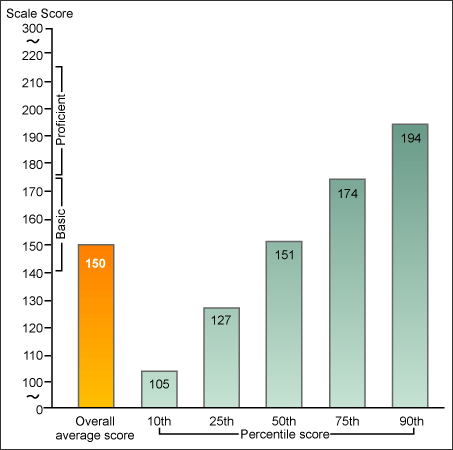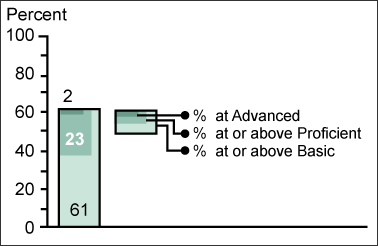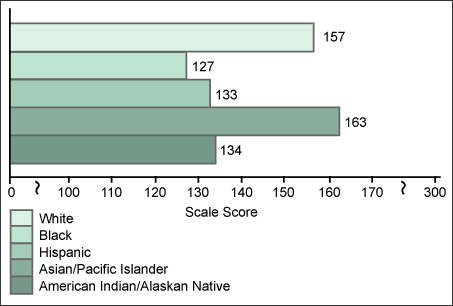

In 2005, a representative sample of over 9,000 high school seniors from 900 schools across the country was assessed in mathematics. This indicator presents the national results from the 2005 National Assessment of Educational Progress (NAEP) mathematics assessment. For 2005, the National Assessment Governing Board adopted a new mathematics framework for grade 12. As a result of this change, the 2005 results could not be placed on the previous NAEP scale and are not compared to results from previous years.
While the overall average mathematics score in 2005 was set at 150 on a 0–300 point scale, students in grade 12 exhibited a wide range of performance as shown in figure 1. Scores ranged from 105 for lower-performing students at the 10th percentile, to 194 for higher-performing students at the 90th percentile. Sixty-one percent of 12th-graders performed at or above the Basic level in 2005, and 23 percent performed at or above the Proficient level (figure 2).


As shown in figure 3, Asian/Pacific Islander students scored higher on average in 2005 than the other four racial/ethnic groups. The average score for White students was higher than the scores for Black, Hispanic, and American Indian/Alaska Native students. Hispanic students scored higher on average than Black students
